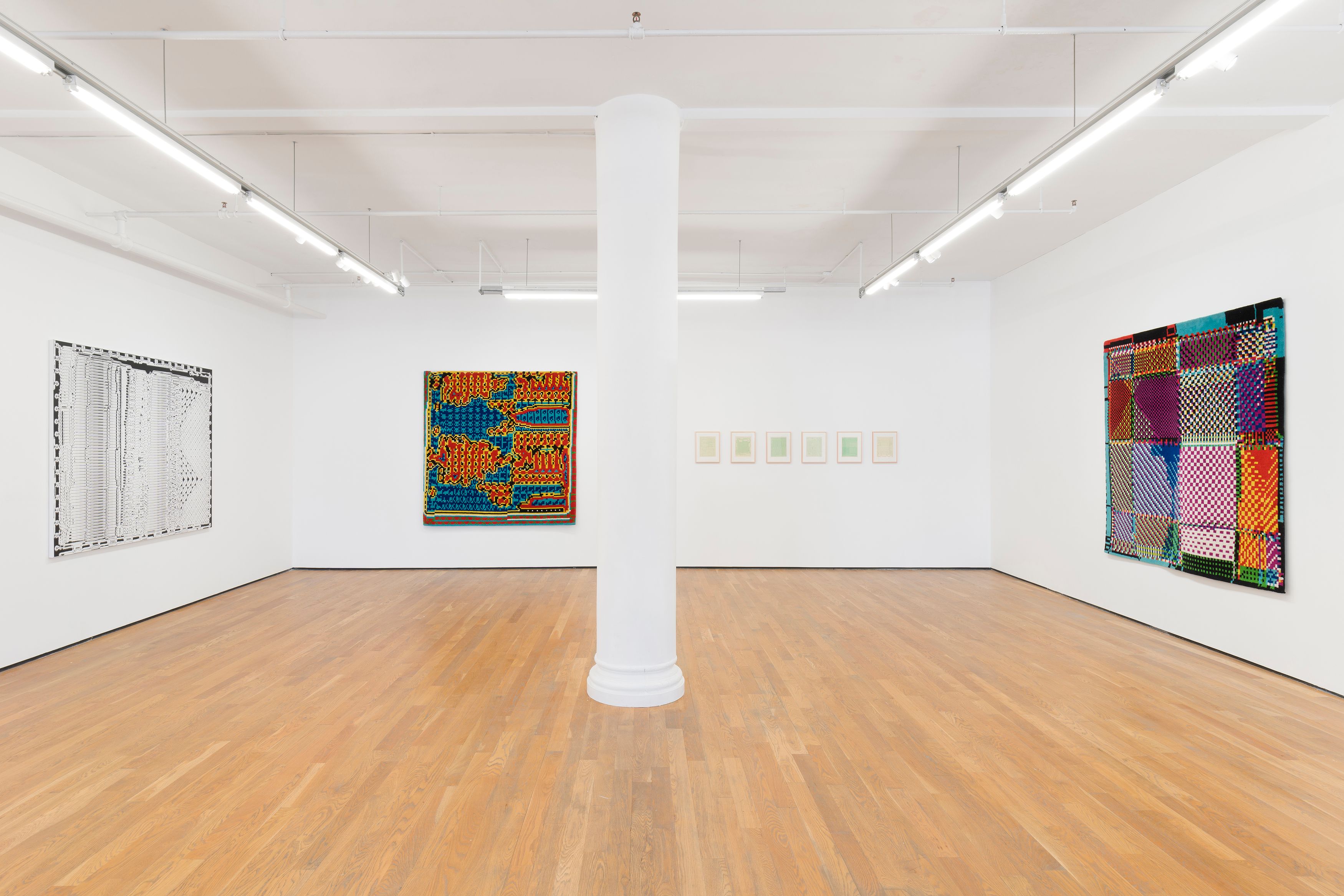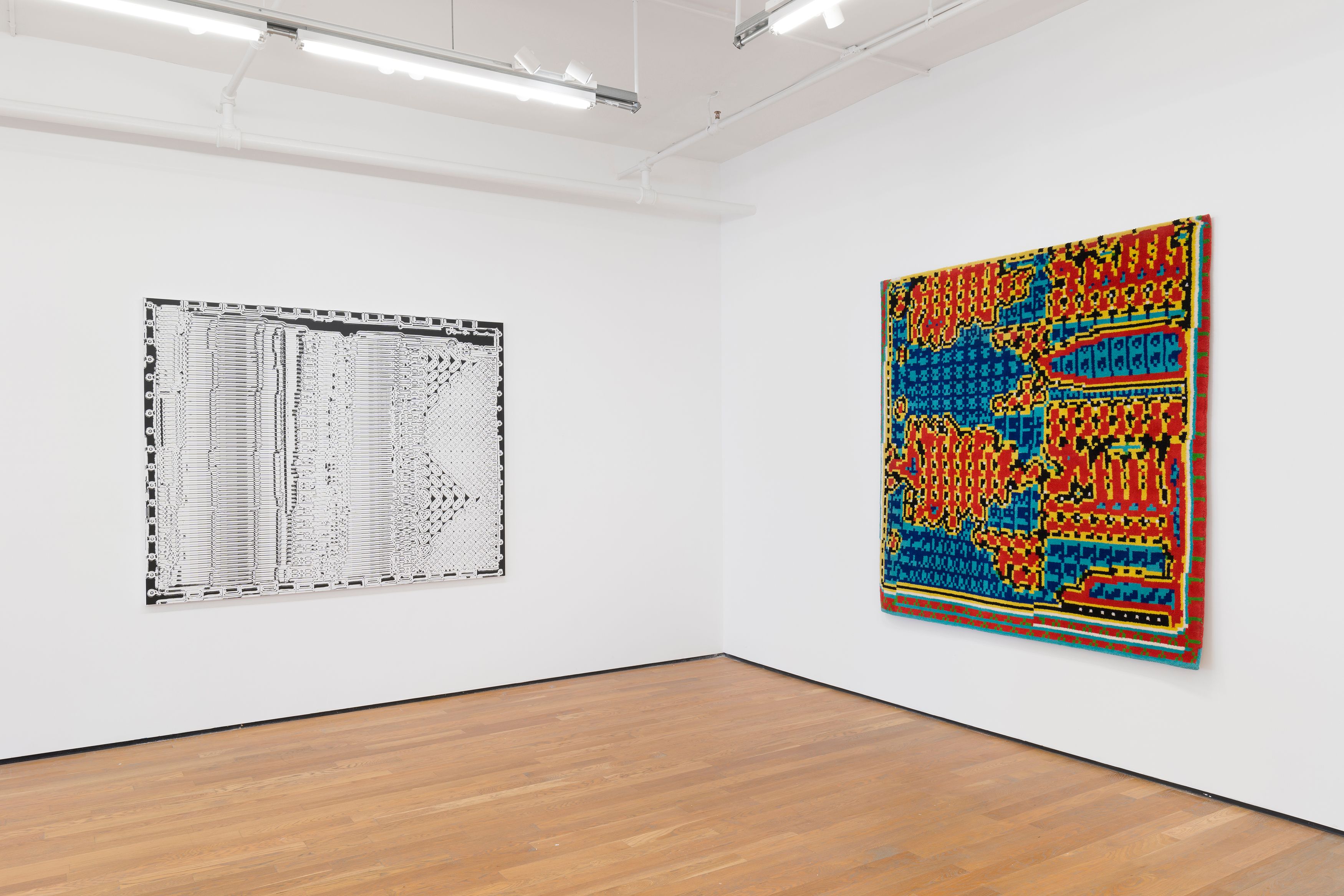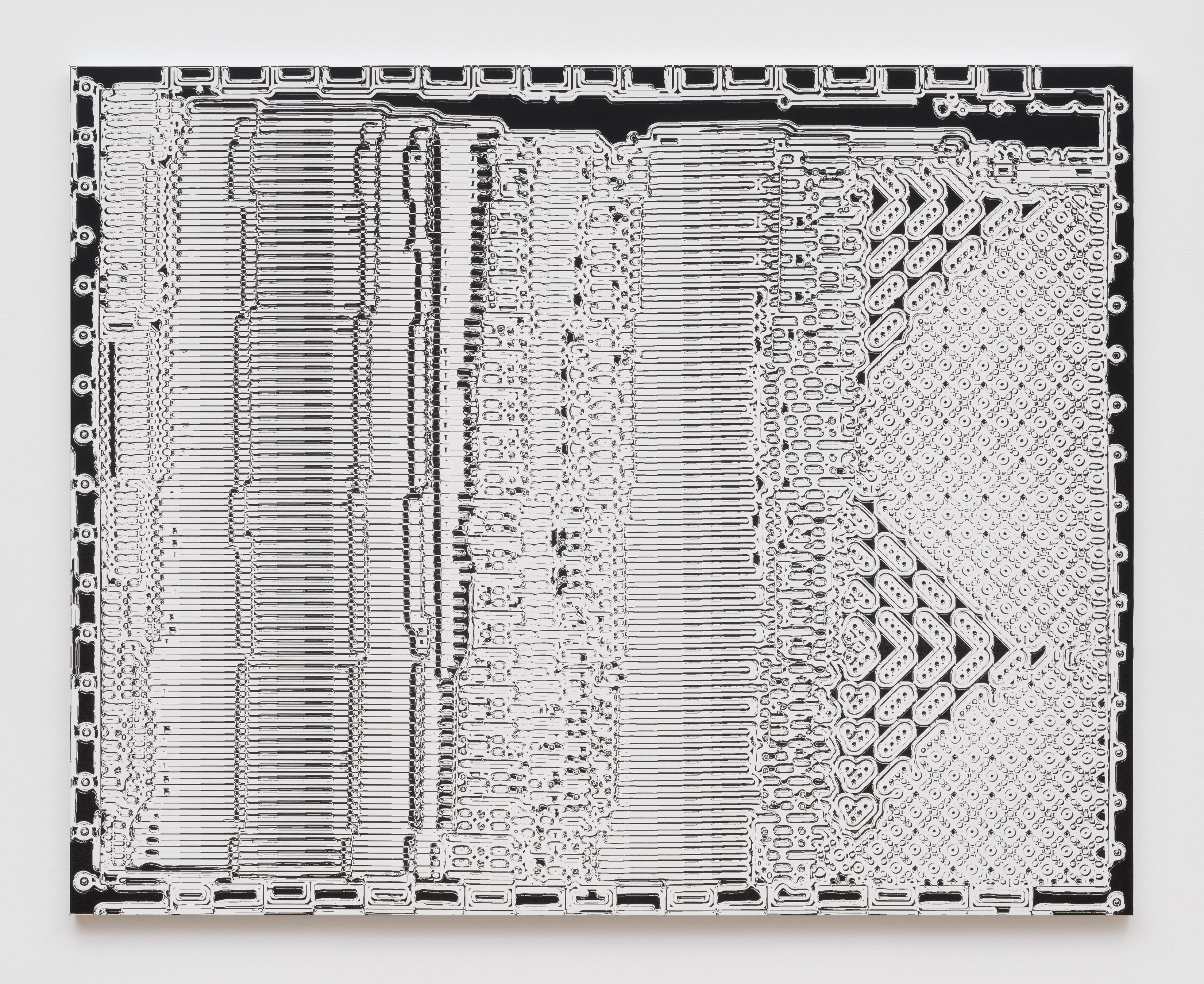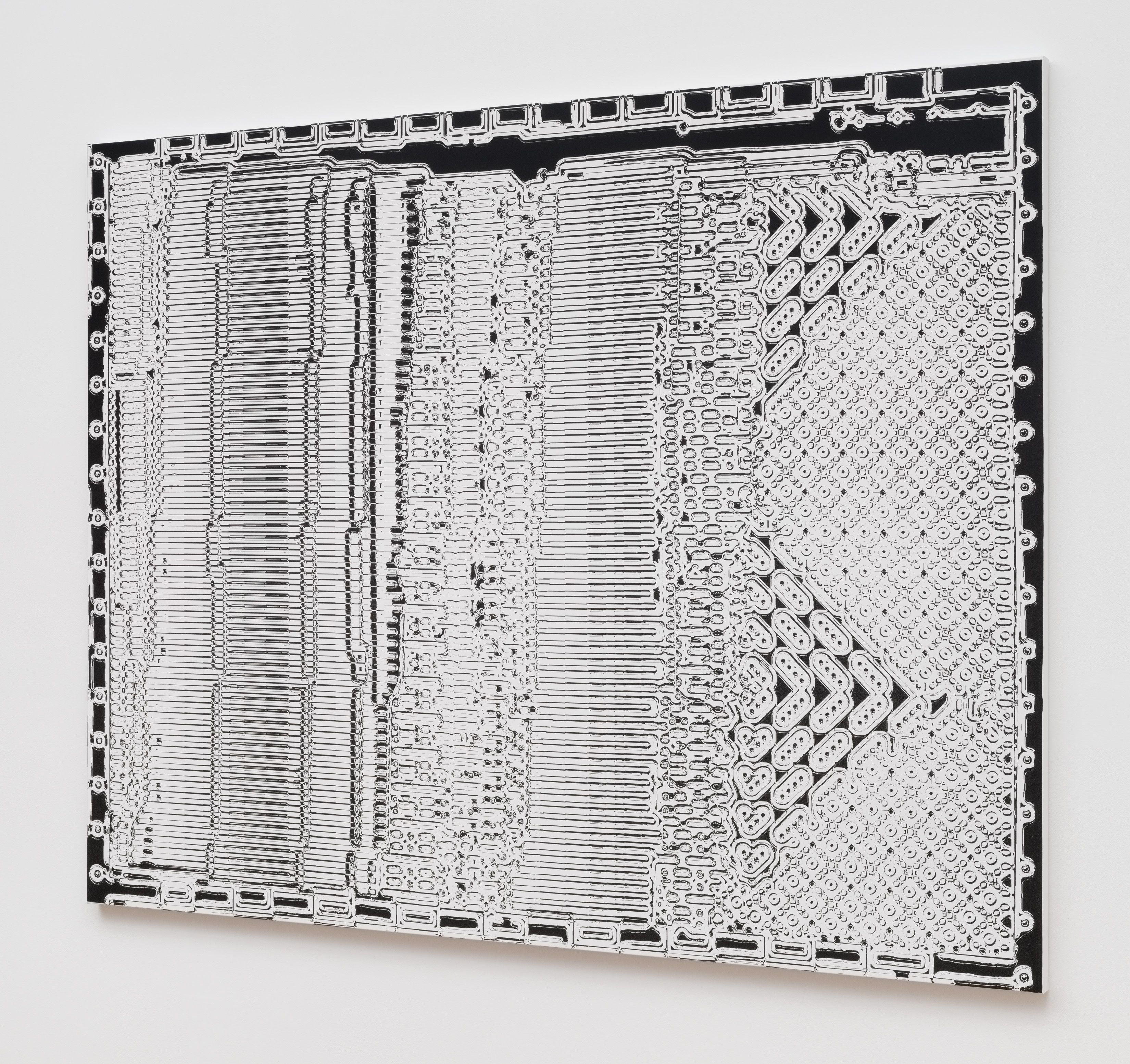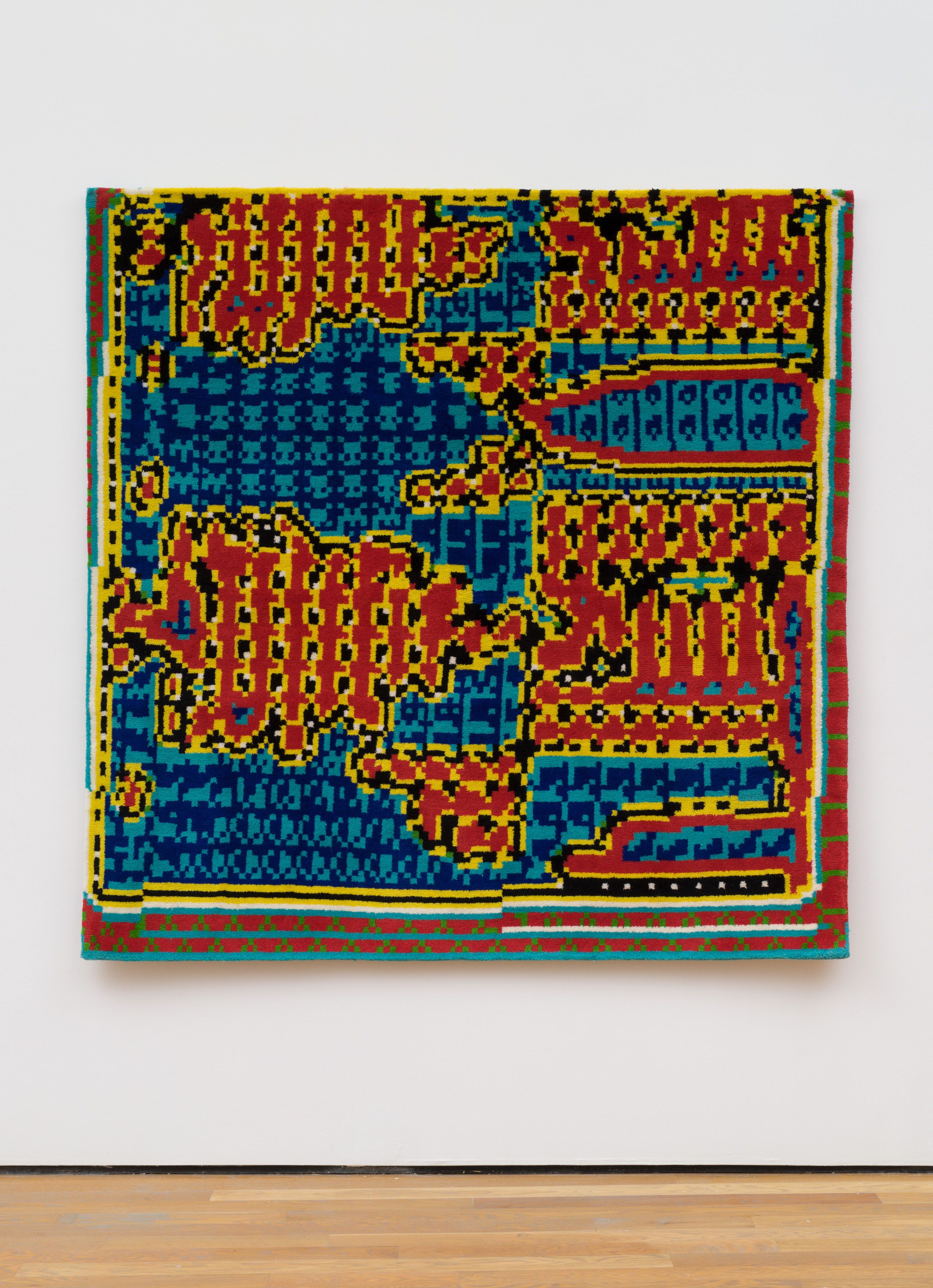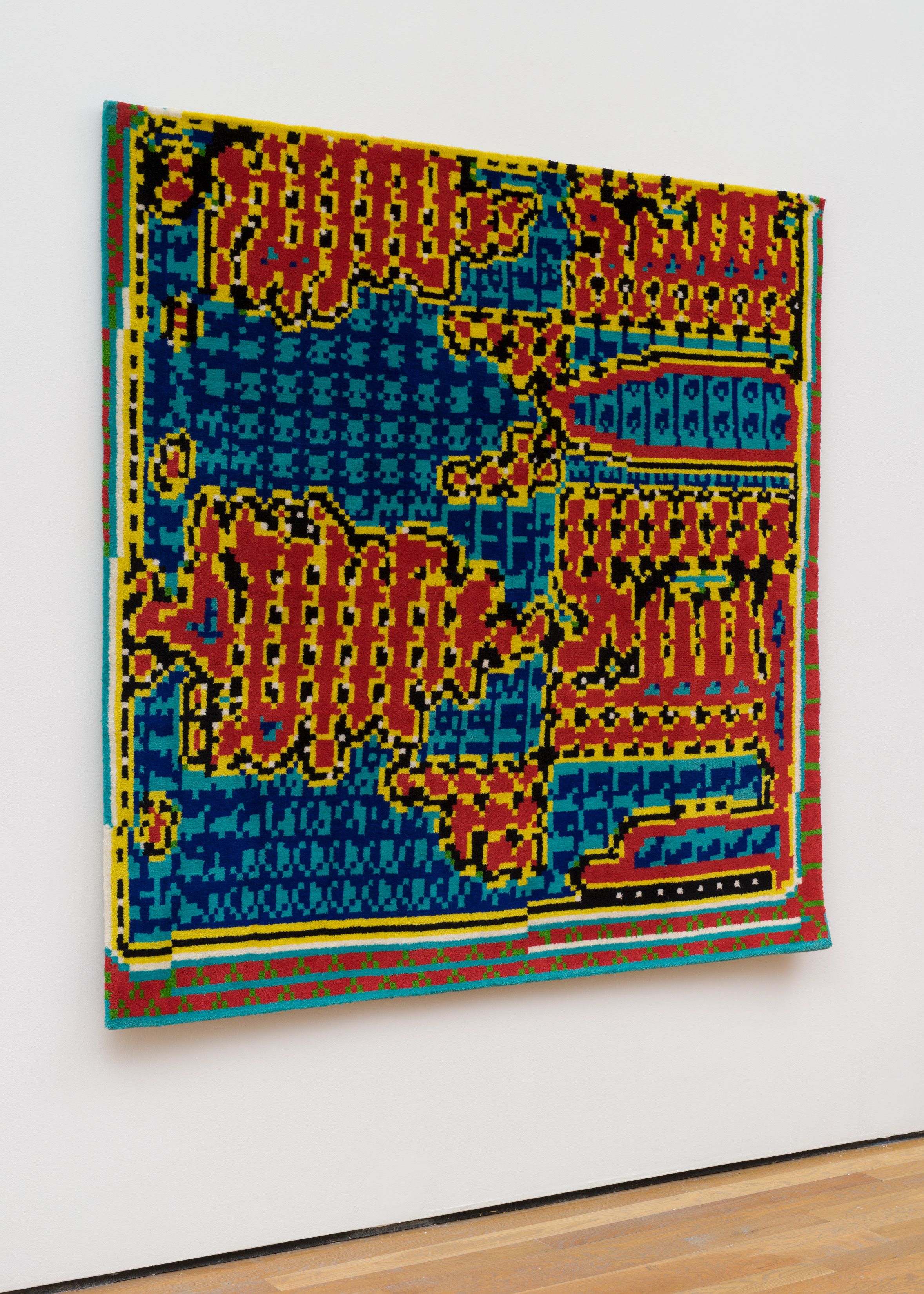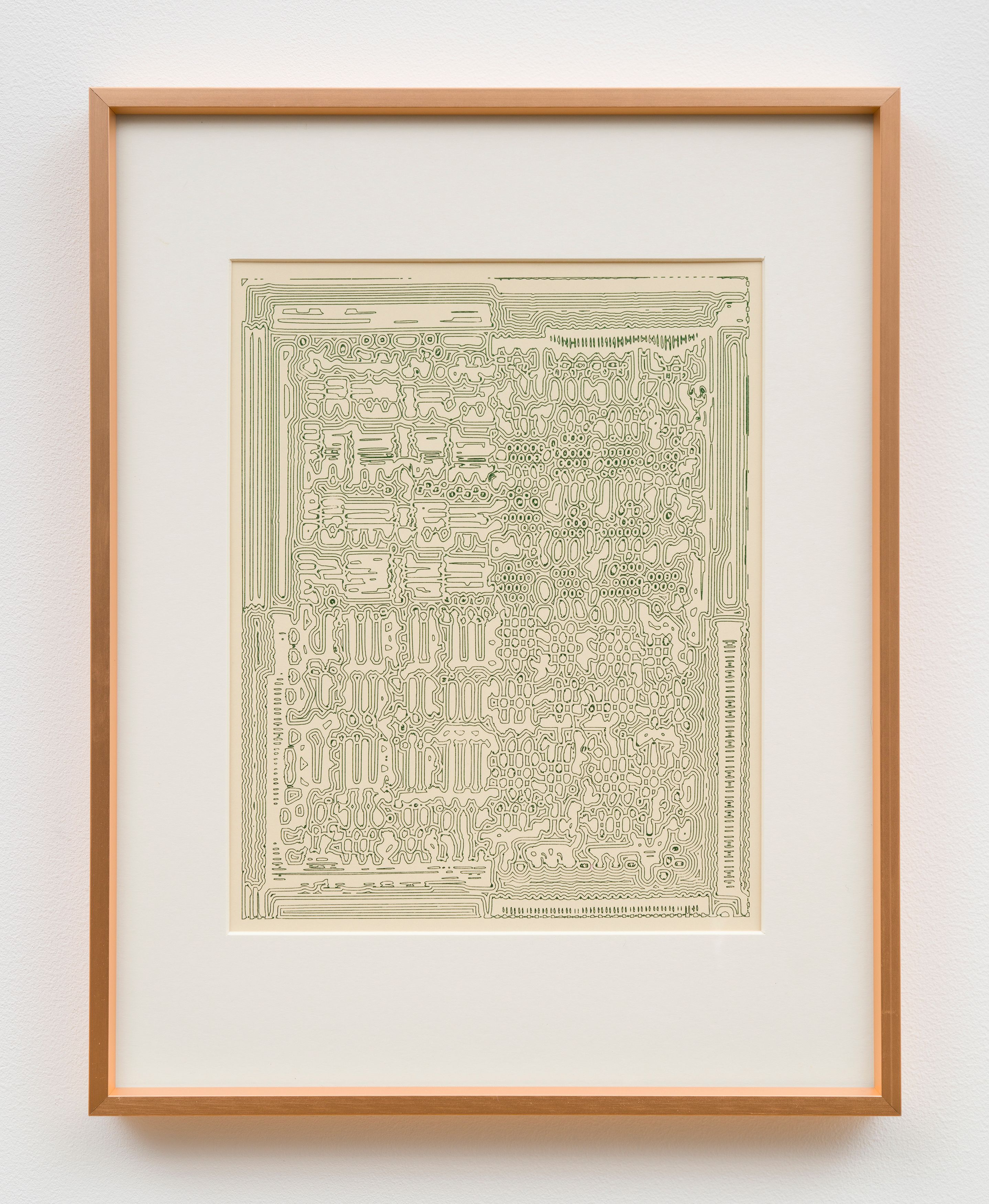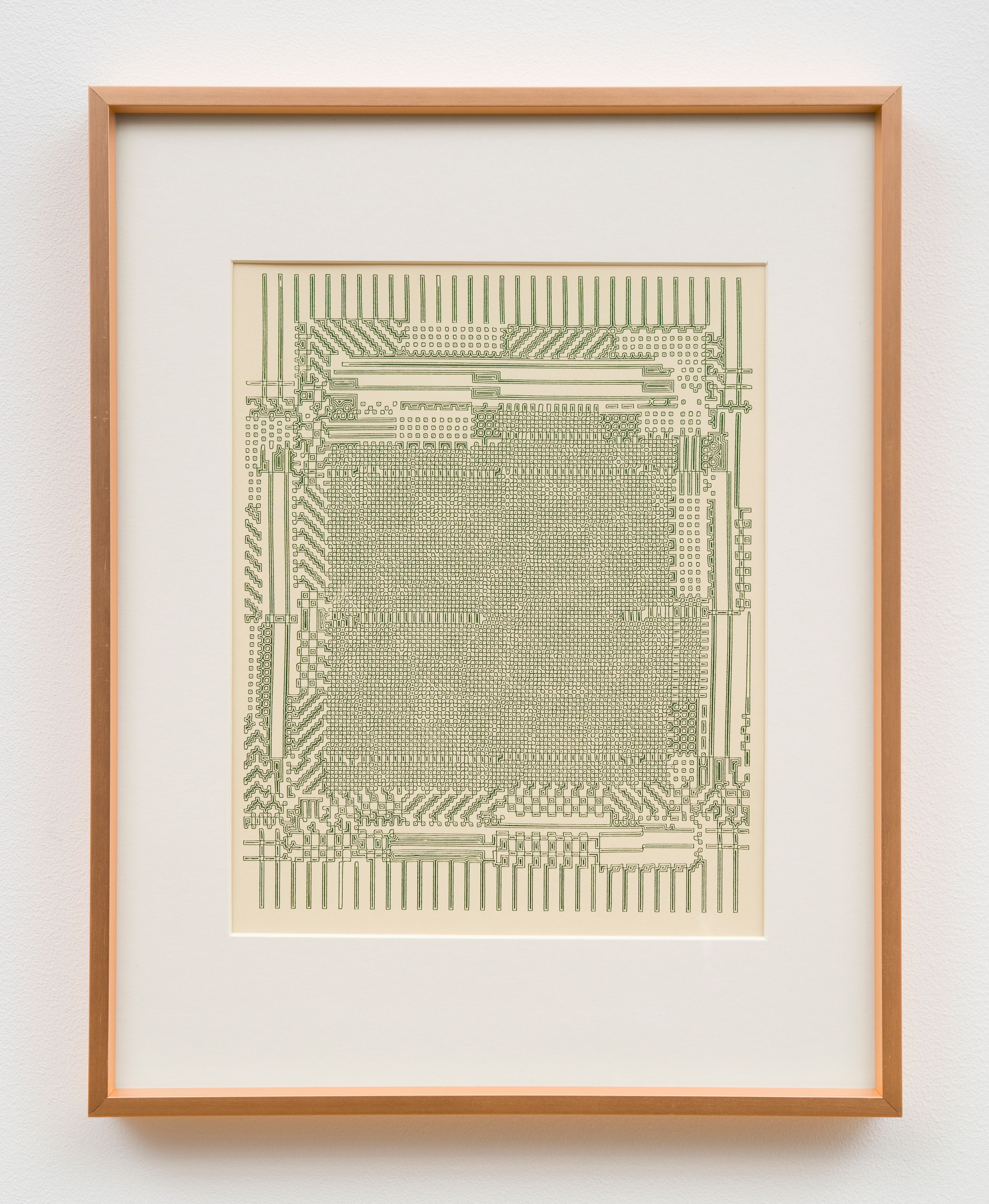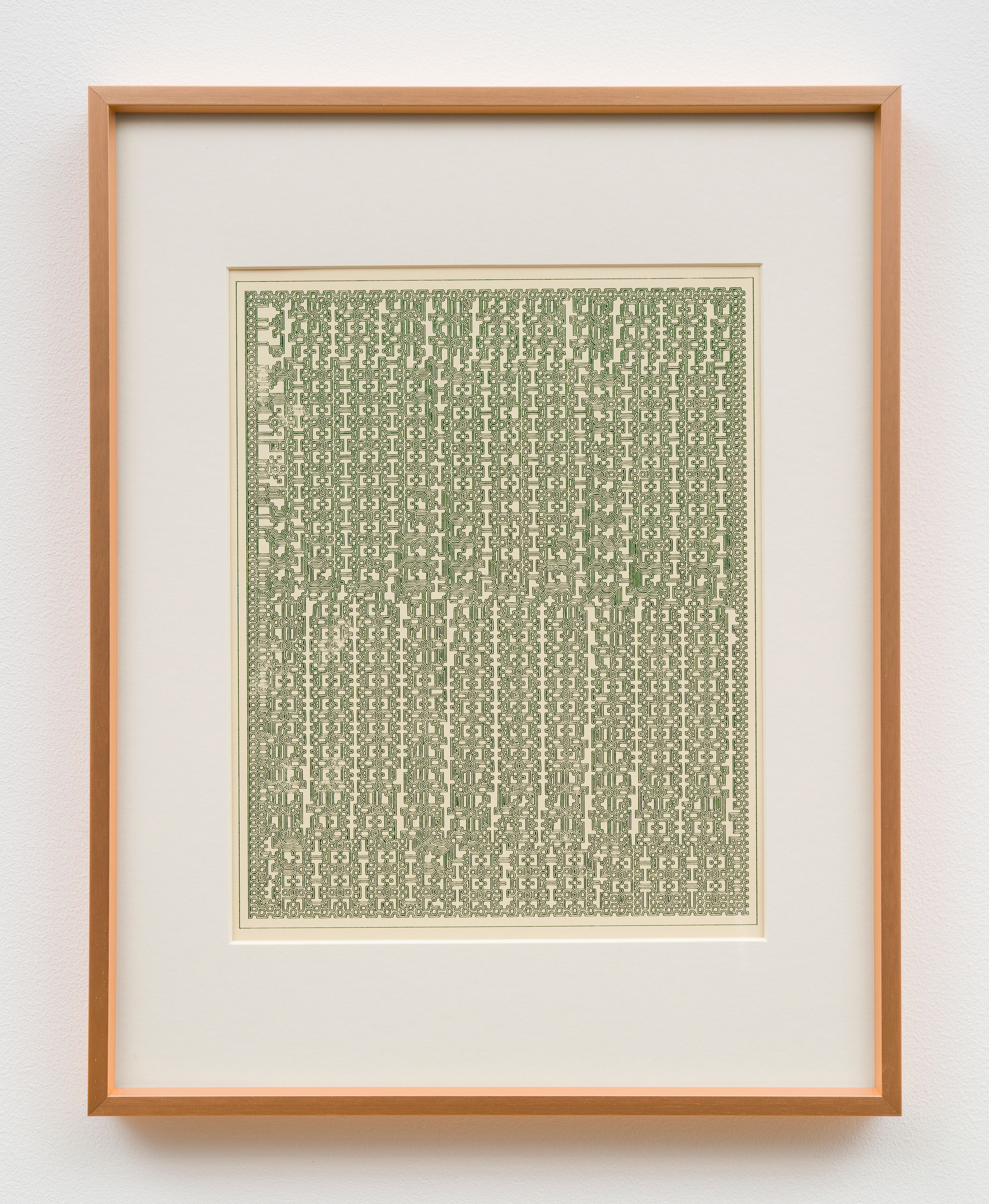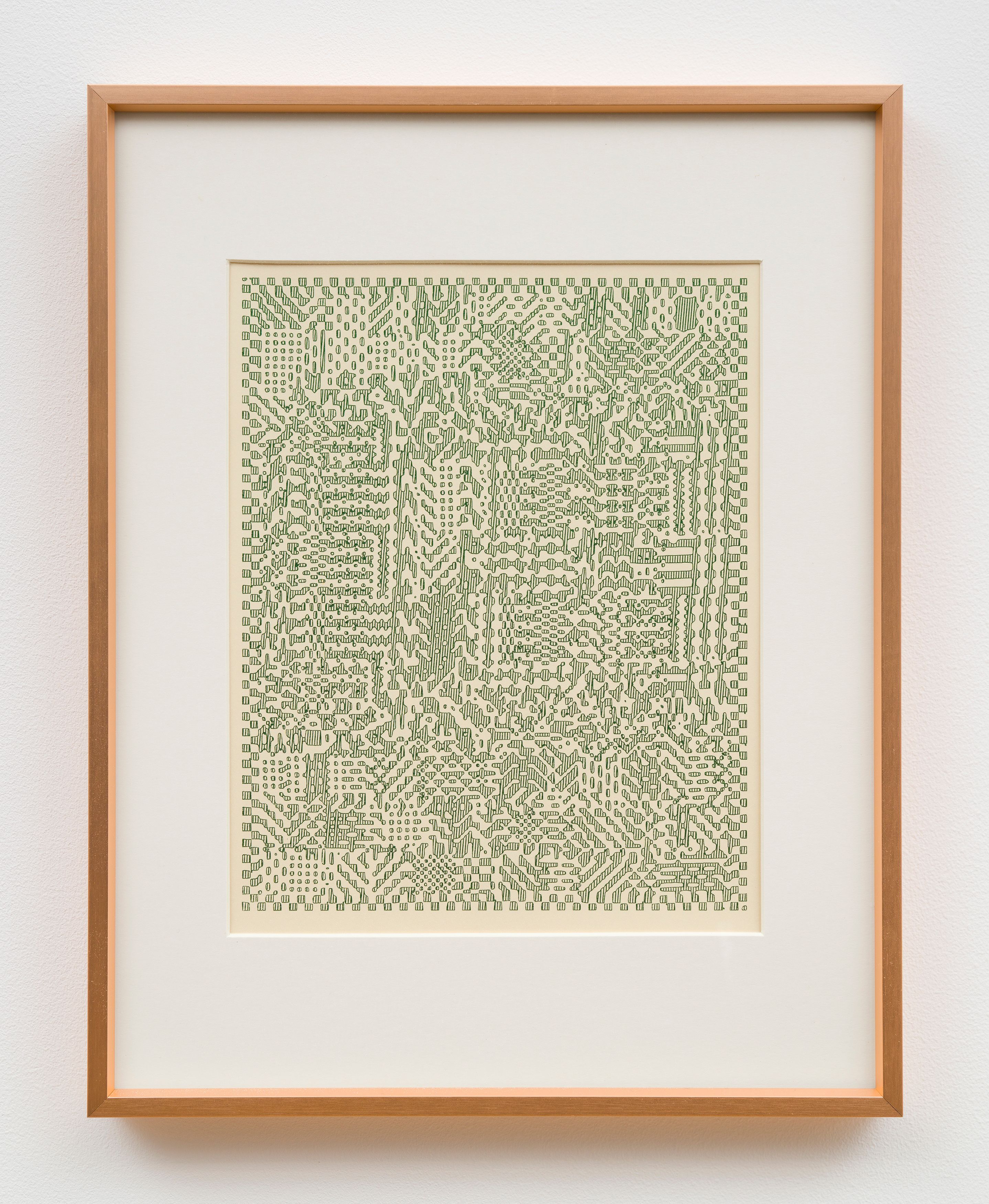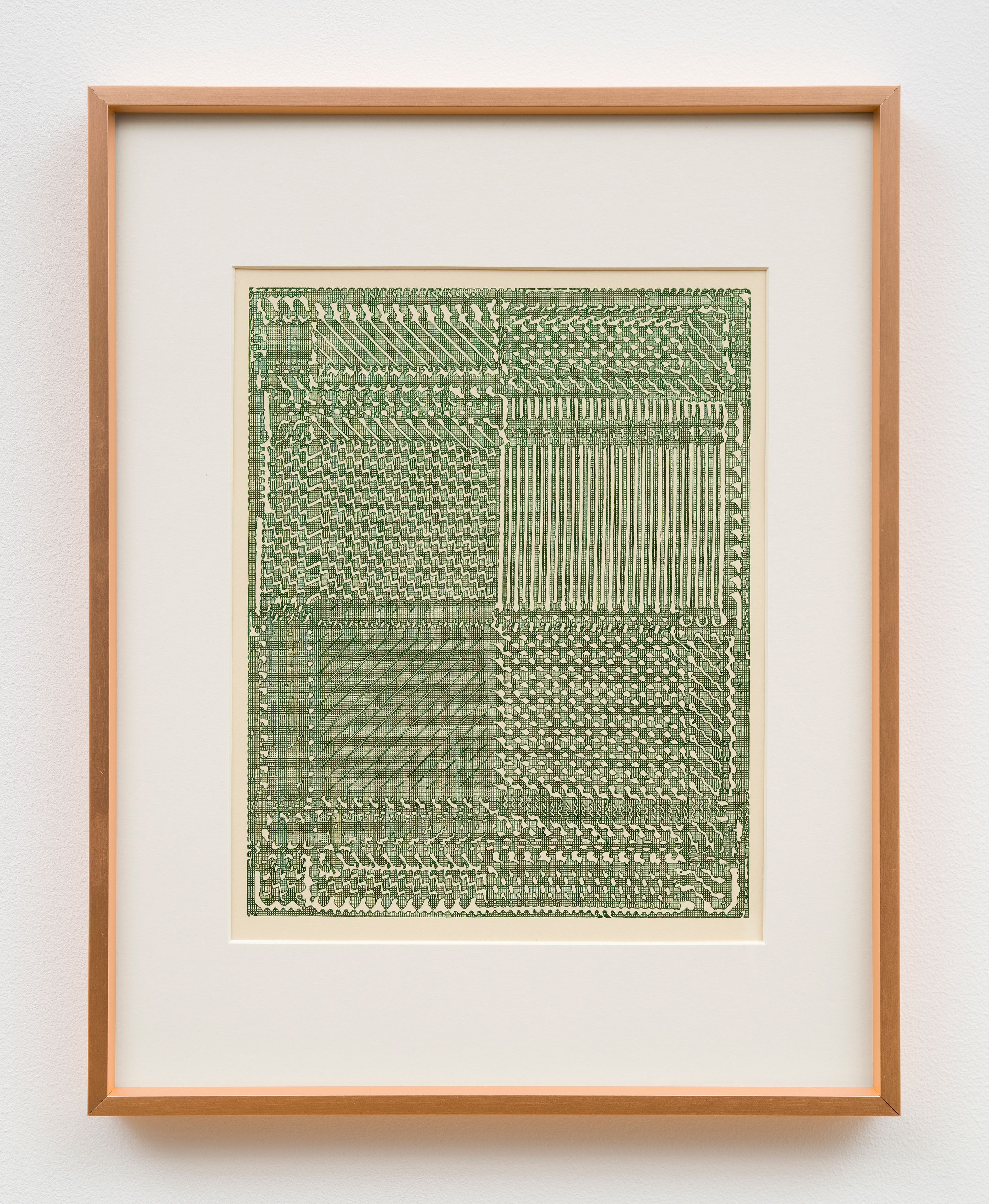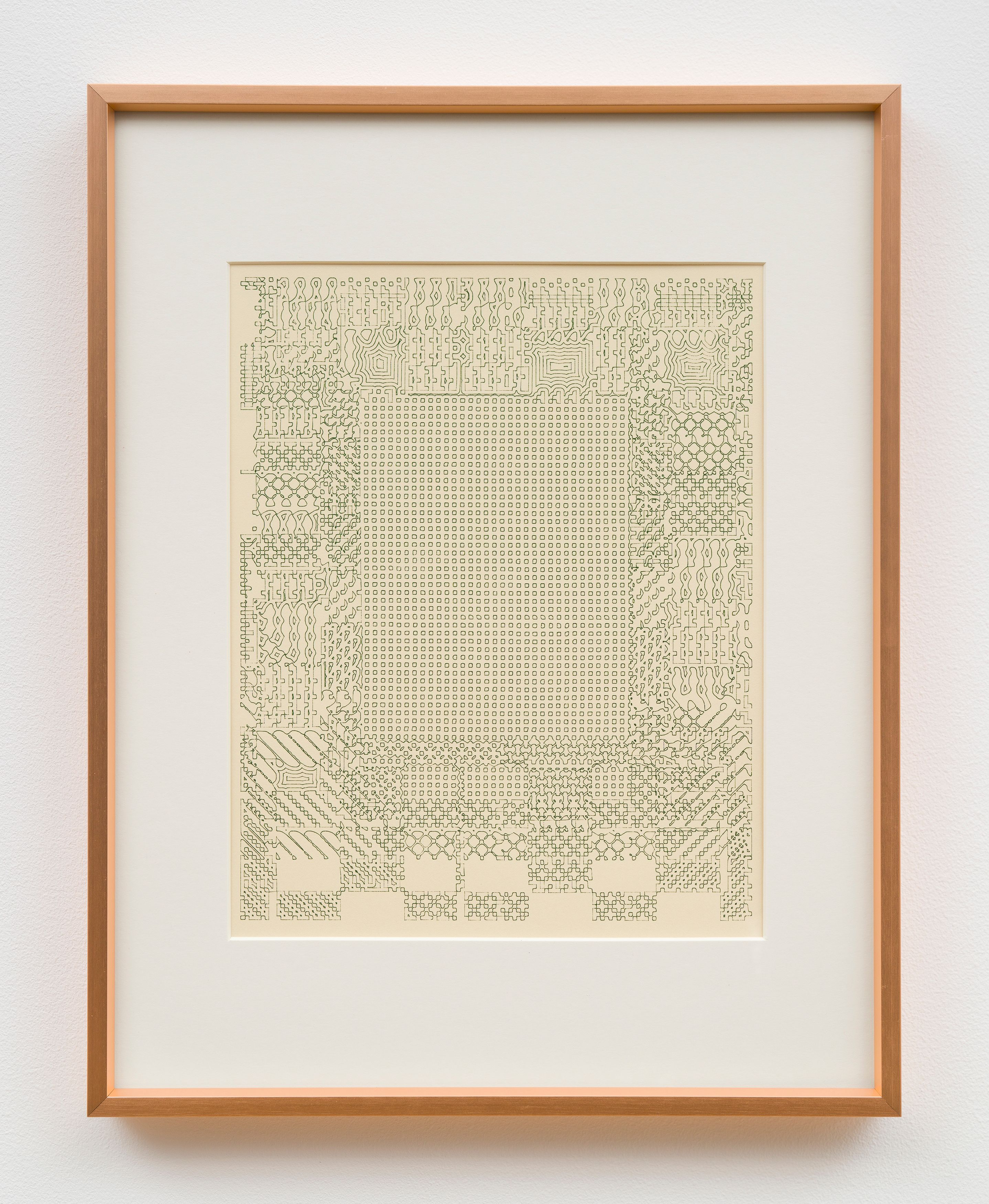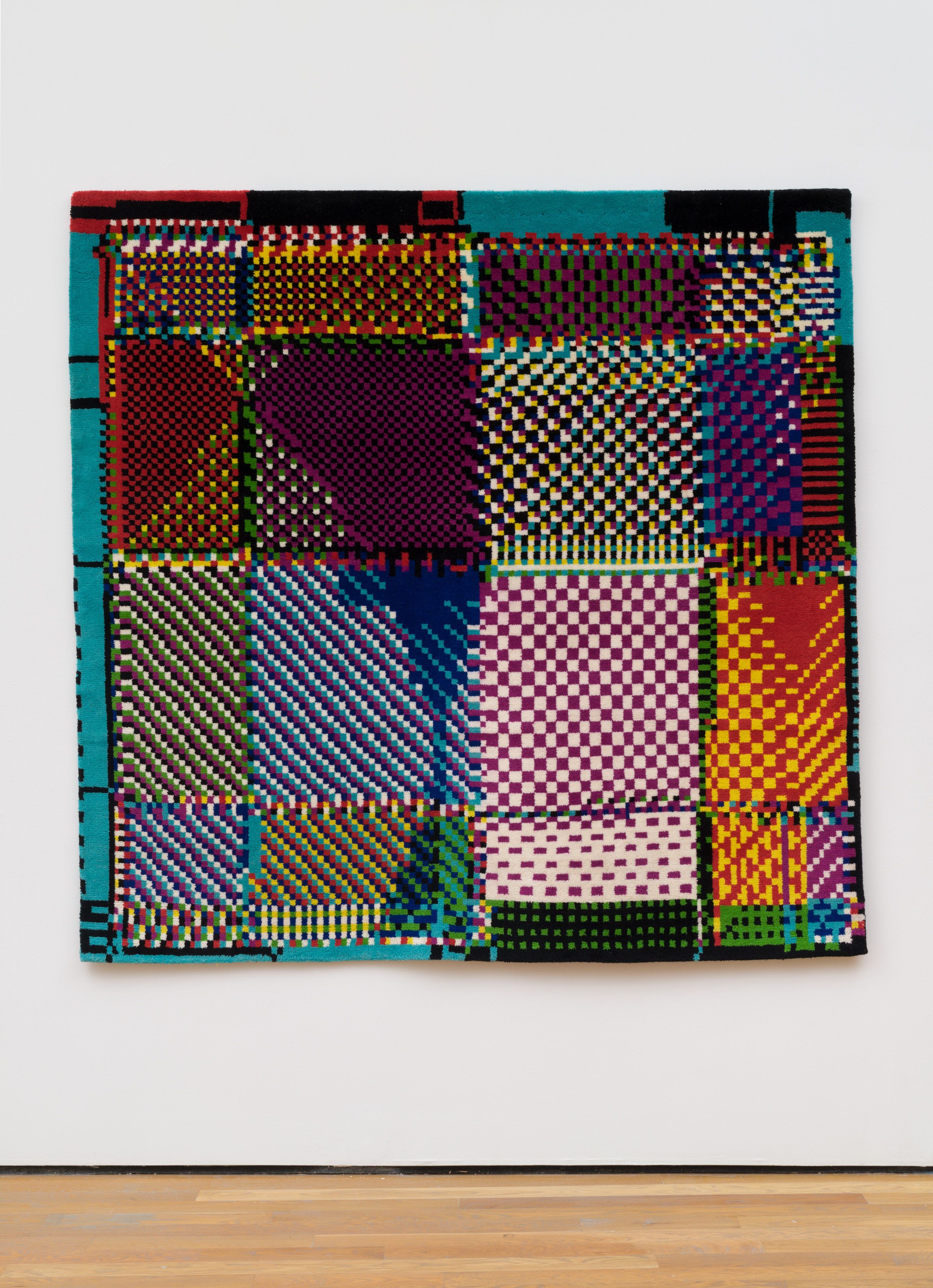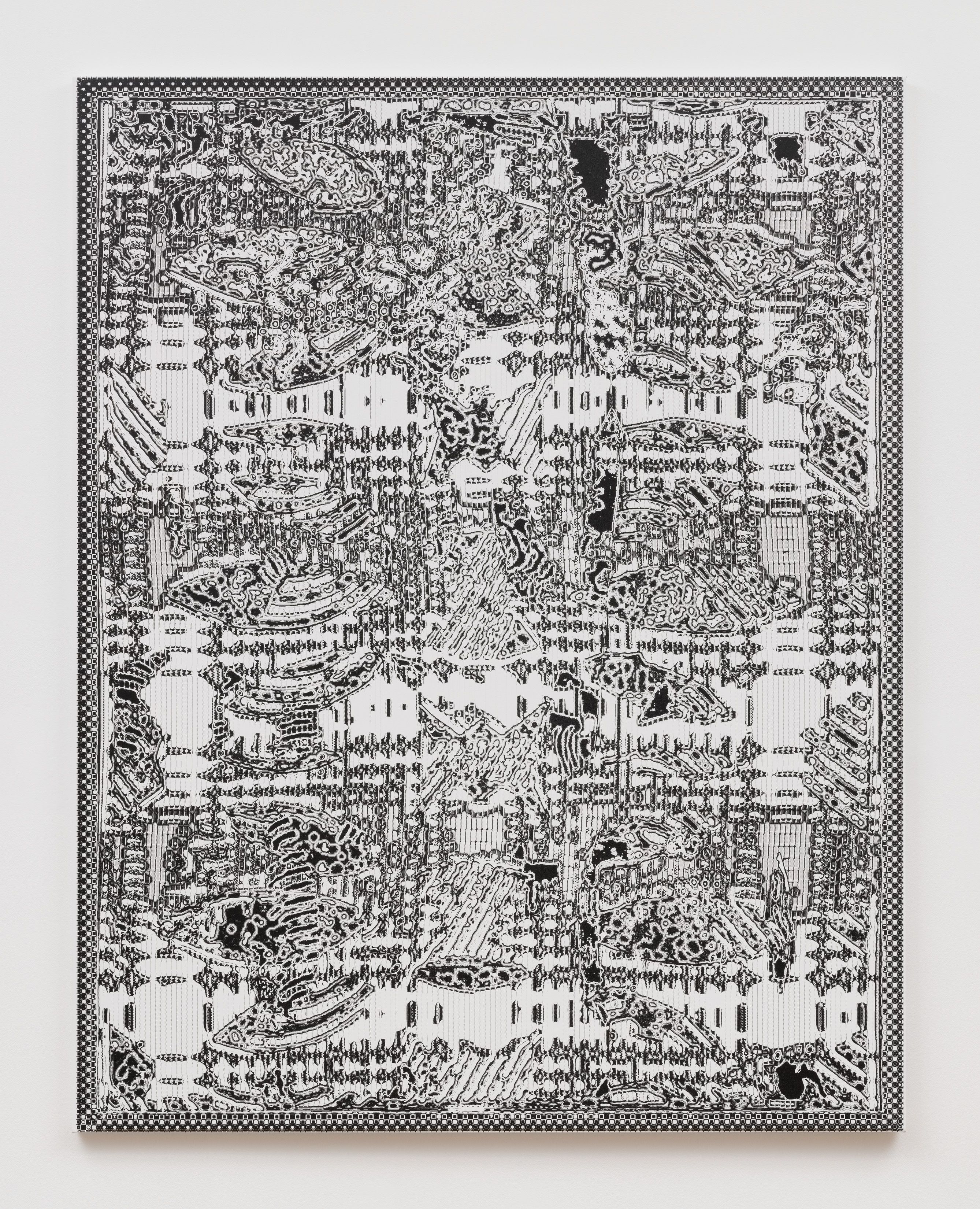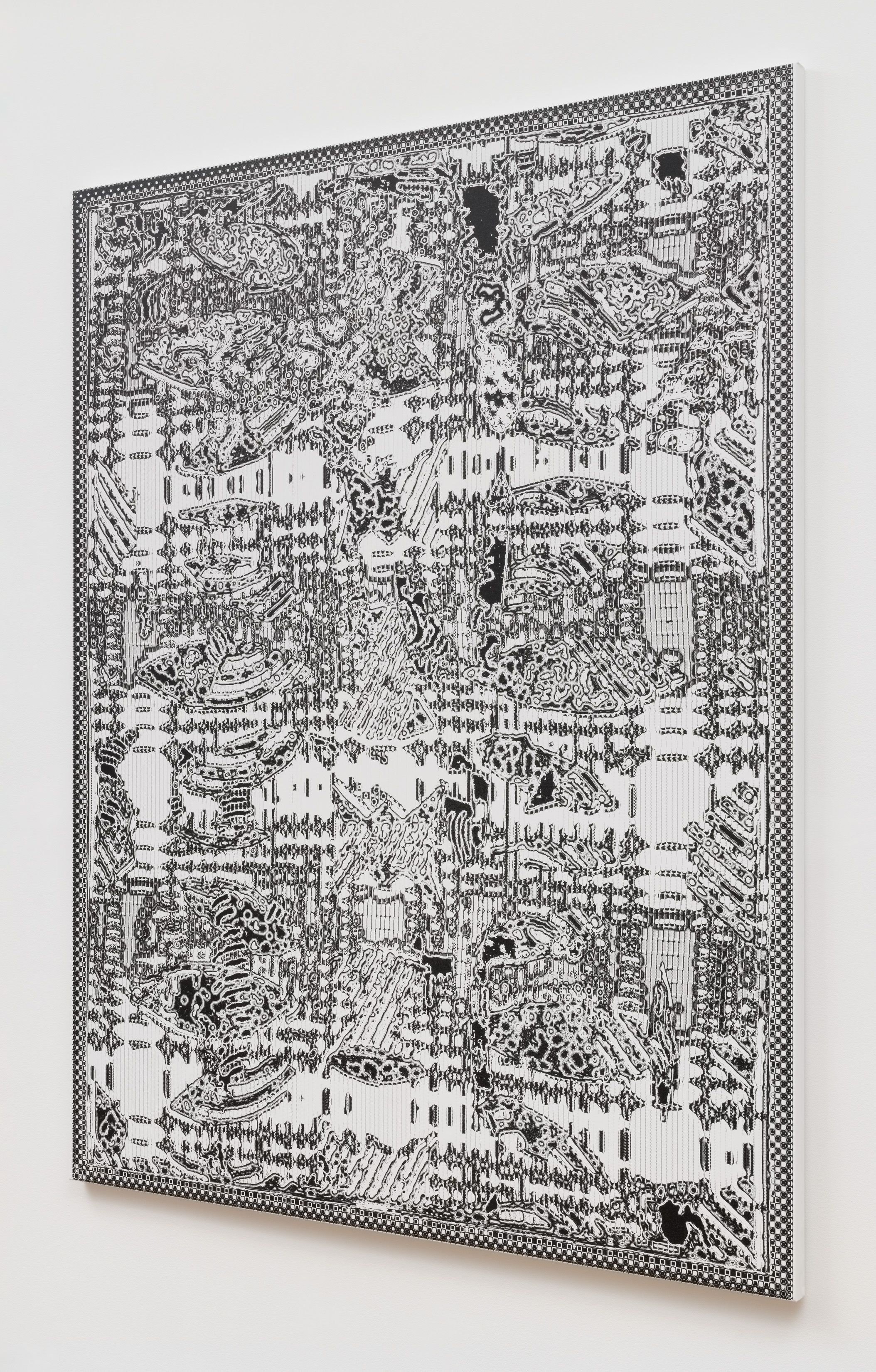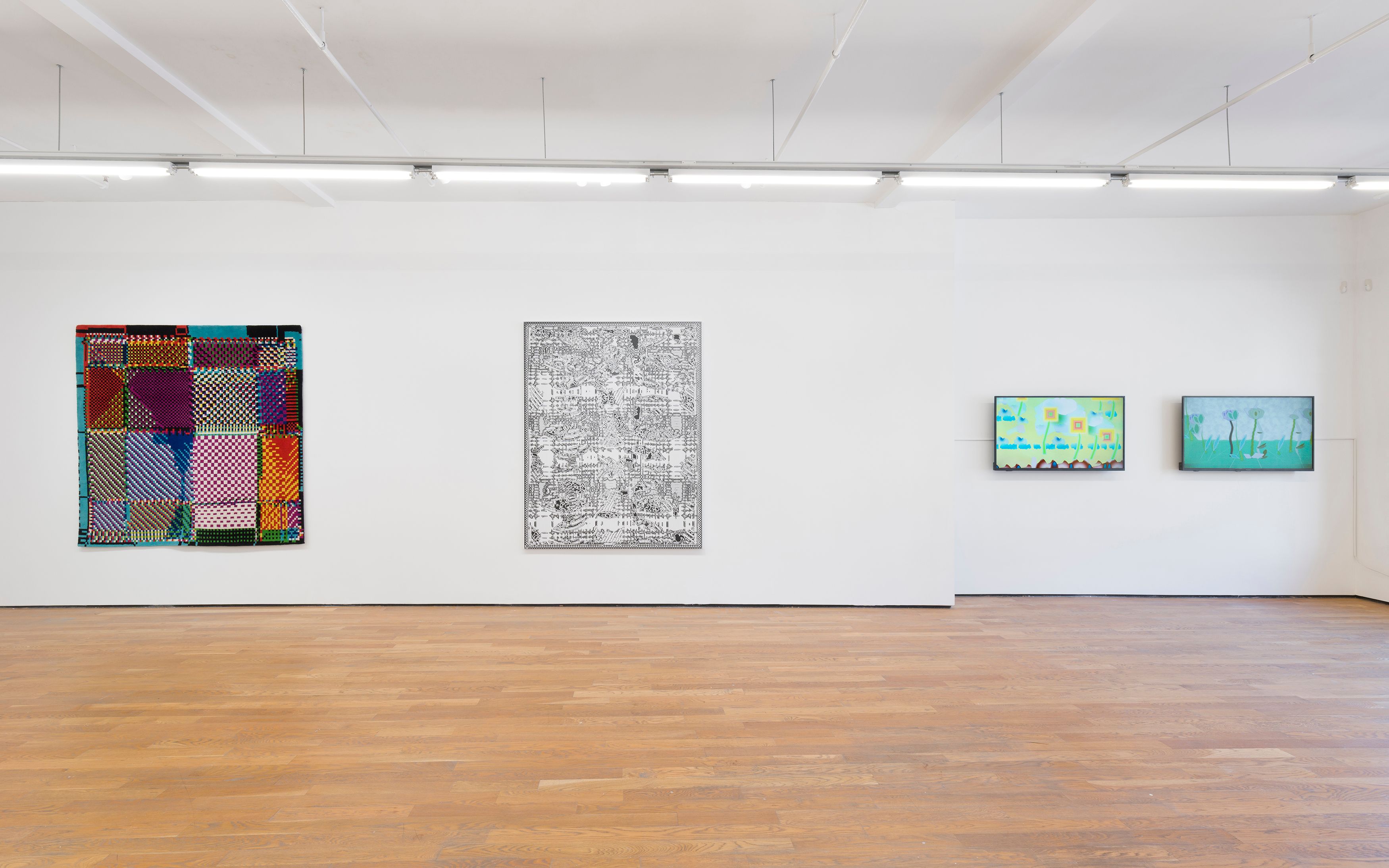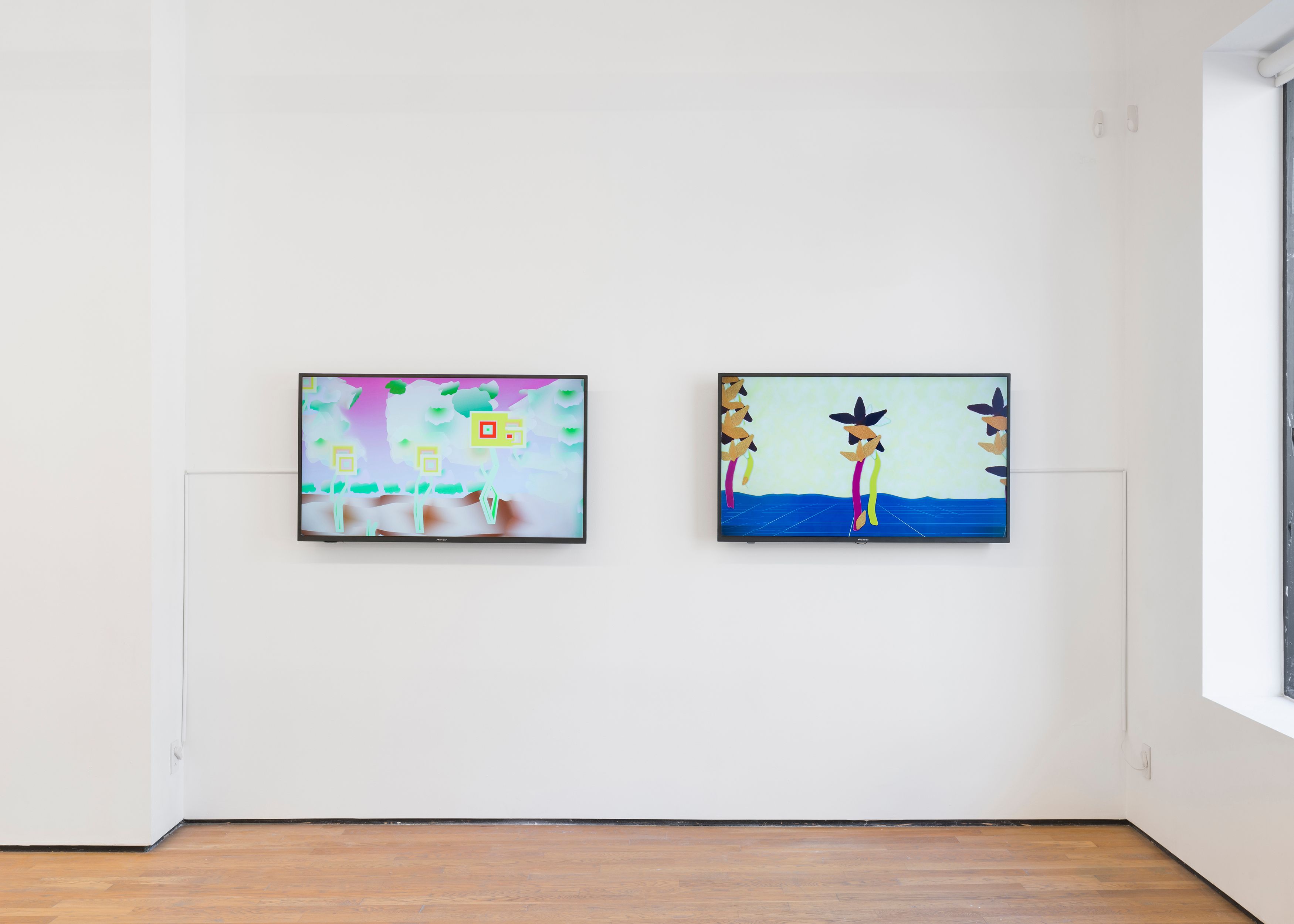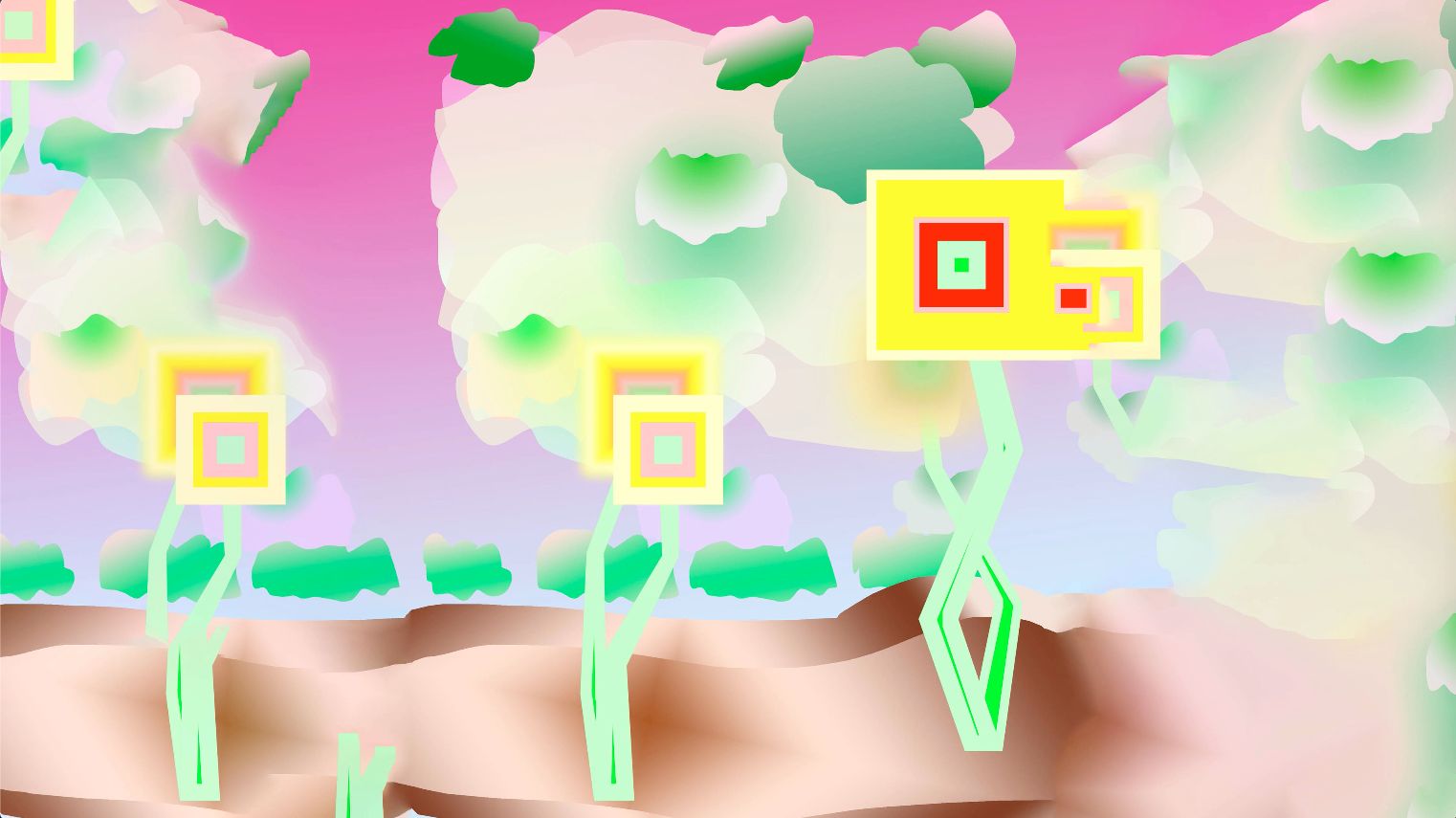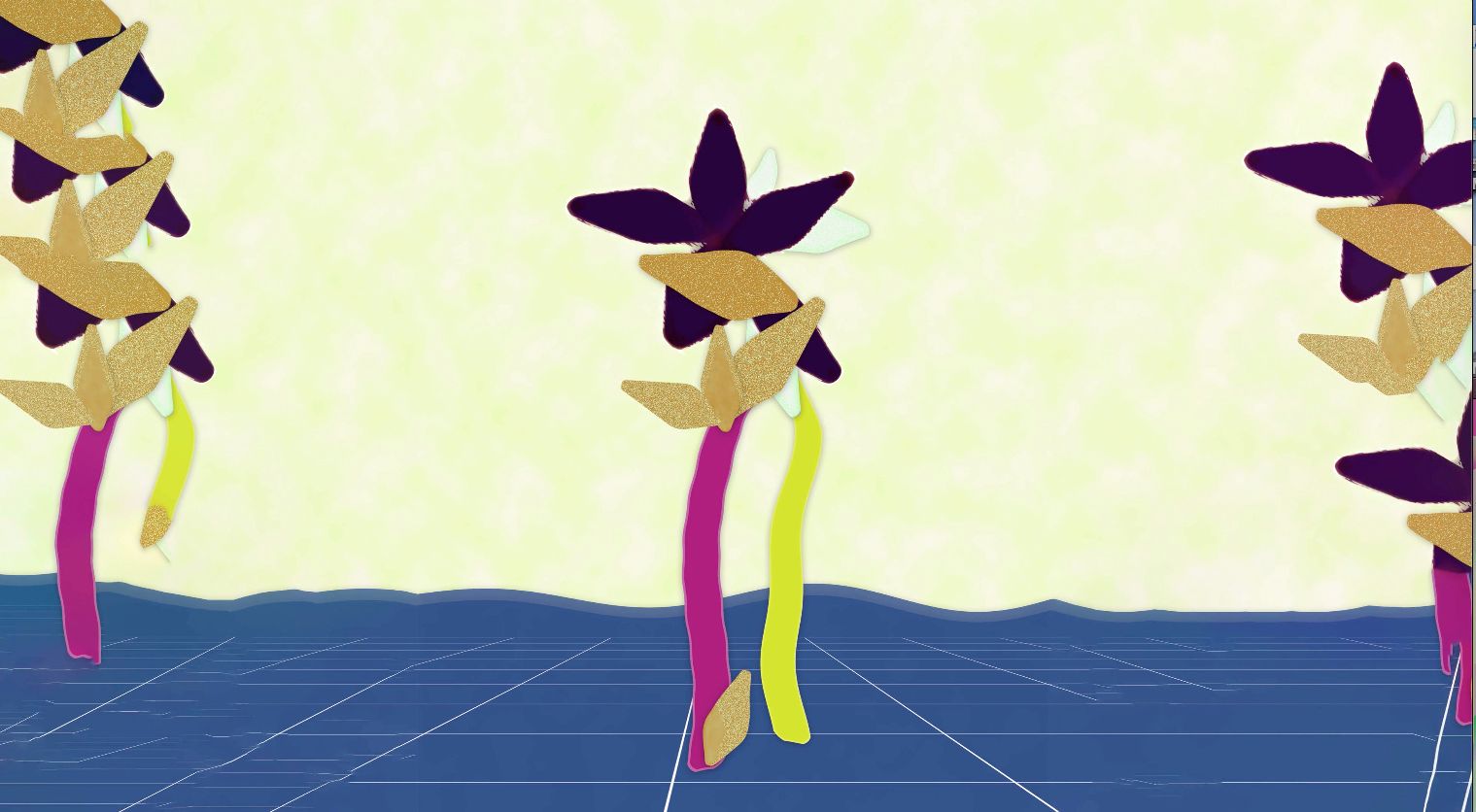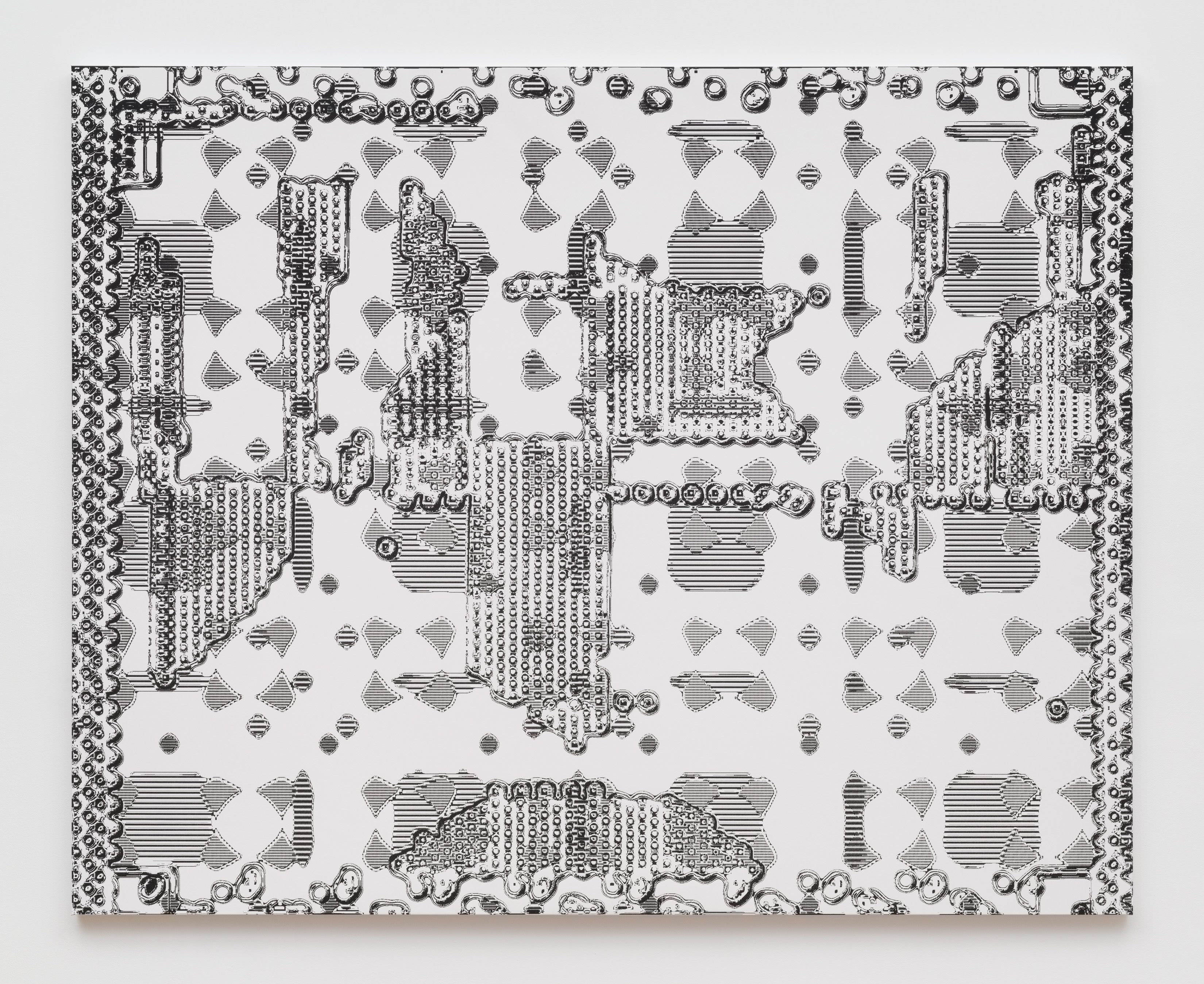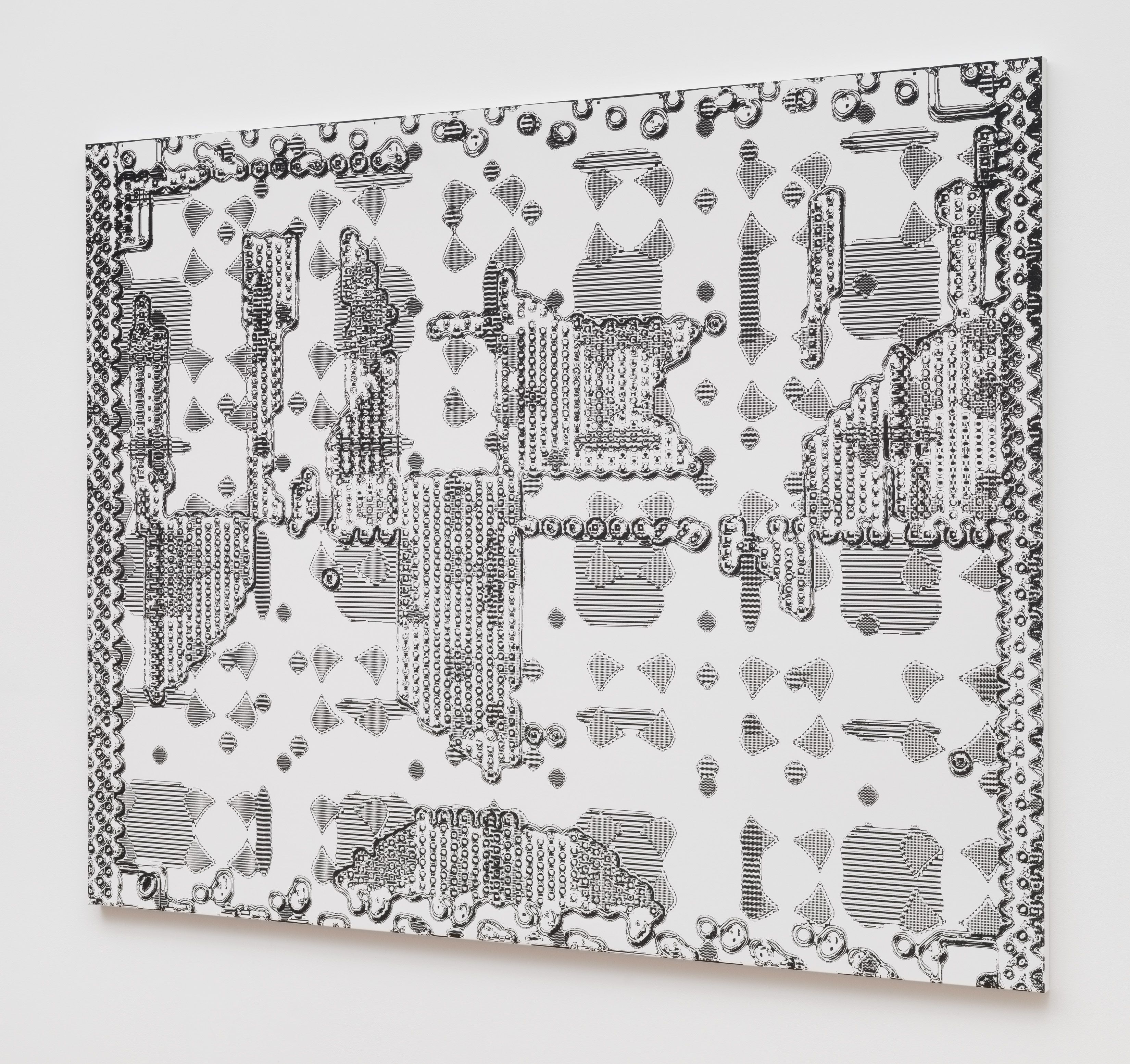“Number colors burn randomly” is Travess Smalley’s latest solo exhibition at Foxy Production. Comprising drawings, silkscreens, textiles, and videos, the exhibition expands upon the artist’s explorations of alternate pathways to visual production. The exhibition’s title is also the title and opening line of a poem the artist devised, using a predictive text program, based on old English flower names. He combines chance and rules to create poetic works that embody “emergence,” the idea of elements being brought together to create something new and greater than its parts.
Smalley writes code or scripts—he says he plants ”seeds of chance”—to generate pictures that are neither fully random nor fully prescriptive. His images stand somewhere between representation and abstraction, between conscious and subconscious, between intent and accident.
He is inspired by Tristan Tzara’s “To Make a Dadaist Poem,” George Brecht’s text “Chance-Imagery,” Yoko Ono’s instructional poems, Allison Knowles’s generative work “House of Dust,” and Harold Cohen’s art-making computer program AARON, all produced by artists who embraced chance as a tool to expand creative possibilities; and his use of scripts as the basis for his images recalls Conceptual artists’ research into the relationship between art and text.
Smalley’s work celebrates repetition—in loops, reverberation, and echoing—as well as its inverse: it relishes variations on themes. It leaves room for negative space: “It might not be the mark of my hand that is interesting, but the exact inverse, the absence, the ghost, the memory, the impression, the debris.“ He values the improvisational and the open-ended: “For me an image is rarely ever finished.”
His “Pen Plotter” drawings are subtle monochromatic abstractions that combine repetitions and disjunctures. A pen plotter is a machine with a robot-like arm that uses a pen to draw an image; the artist adapts this now largely outmoded technology to generate forms that are both random and scripted. Patterns appear to be either evolving or dissolving; figures are alluded to and then lose definition.
Three large silkscreens are intricate black and white abstractions whose geometrical patterning repeats and refracts. They conjure expansive visual worlds: complex configurations that are both enigmatic and tangible. They overlflow with a dynamic fluidity that appears to be constantly in flux.
Two colorful rugs, handwoven in northern India with naturally dyed wool, are unique combinations of craft and digital imagery. They have an uncanny quality about them: their domestic familiarity is underscored by their patterning: their discontinuities, variances, and unpatterned blocks of color.
Smalley’s videos are colorful animations that mine the history of flower painting and drawing. Flowers throughout art history have been both highly symbolic and programmatic in their visual systems—qualities that the artist appropriates— “I’m interested in all the definitions and borders and constraints other creators set when they are making flowers”—to produce moving images that transport the viewer into vivid landscapes of visual pleasure and discord.
Travess Smalley (Huntington, WV, 1986) lives and works in Providence, RI. He holds a BFA from The Cooper Union, New York, NY, and an MFA from the Rhode Island School of Design, Providence, RI. Exhibitions include: “Number colors burn randomly,” Foxy Production (solo)(2023); “Des champs de fraises pour l’éternité,” La Galerie, centre d’art contemporain de Noisy-le-Sec, Noisy-le-Sec, France (2022); “Minecraft Language Edition,” Ender Gallery in collaboration with MacKenzie Art Gallery, Regina, SK, Canada (solo); “Pixel Rugs,” Arcade On Stadium, Provo, UT (solo)(both 2021); “Downtown Painting,” Peter Freeman Inc., New York, NY (2019); “Standing Still, Lying Down, As If,” Museum of Contemporary Art Detroit, Detroit, MI (2018-2019); and “What is a Photograph?,” International Center of Photography, New York, NY (2014); and “Public Interfacial Gesture Salon,” Bard Center for Curatorial Studies, Annandale-on-Hudson, NY (2011).
_
Special thanks to Lia Gangitano and Participant Inc., Marginal Editions and Keigo Prints Inc., Nitya Exports, and Yezica Tutic.
Photography: Charles Benton.
